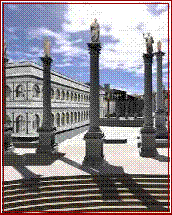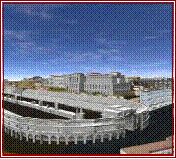
|
To contact us: |

|
News Article |
|
With over a million inhabitants in the fourth century, Rome was the largest metropolis the world had ever seen, unsurpassed until Victorian London. Now working in together a team combining classicists, engineers and archaeologists has unveiled a complete 3-D model of Rome, circa 320 A.D. To create the digital model, researchers scanned the “Plastico di Roma Antica,” the 1970’s plaster model of the city built to 1/250 scale and covering an amazing 3,000 square foot. Because of the model’s intricacy, each 6’ x 6’ section contained 60 million data points, Italian engineers used laser radar designed to test jet aircraft. The digitised scan produced amazing results, enabling a street by street fly-through model of the entire city. The resolution is good enough to run on a movie screen. Bernard Frischer, director of the Institute for Advanced Technology in the Humanities at the University of Virginia and the “Rome Reborn” project’s organiser’s goal is to create a “wiki” for Rome scholars to use as an online forum. Archaeologists can add or change buildings or monuments as new evidence is unearthed, architects can explore the city’s sightlines and traffic flows and art historians can add details and information to buildings that have been scanned by other teams. Scholars hope the digital Rome will lead to a new understanding of how the city worked. “How we gather information defines how we understand the city,” says Dean Abernathy, a professor at the University of Virginia School of Architecture. “Publications made to go in a book end at the edge of the page. This gives you the whole context.”
|

|
Images: Copyright of the Regents of the University of California 2007 |
|
ROME LIVES AGAIN |
|
Date: 20 July 2007 |



|
Click here for more on the Rome Reborn project |
|
The Roman Forum (above) the Circus Maximus (below) , and the Colosseum (below left) as they appear in the CG model. |